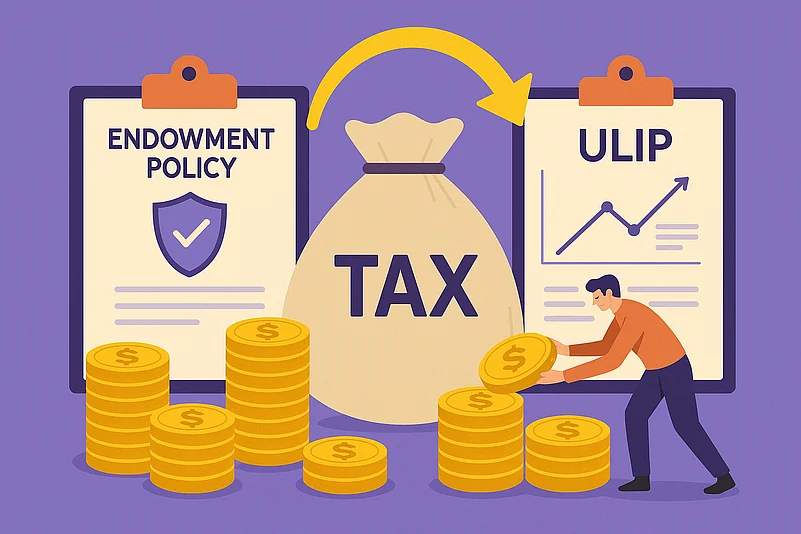
Summary of this article
ULIPs after Feb 1, 2021, follow new tax rules with grandfathering.
Premiums above Rs 2.5 lakh annually lose the Section 10(10D) tax exemption.
Endowment policies after Apr 1, 2023 taxed if premiums exceed Rs 5 lakh.
Structuring premiums smartly ensures life insurance tax benefits remain intact.
Experts always tell you to keep your insurance and investments separate, but there might be reasons why you choose a Unit Linked Insurance Plan (ULIP) or a traditional life insurance plan.
If you do, you need to be aware of how taxes affect maturity proceeds to make a wise decision.
For ULIPs
Unit Linked Insurance Plans (ULIPs) issued on/after 1st February 2021 attract the Grandfathering concept for tax calculations, and those issued before are continued under the old 10(10D) conditions.
“If the annual premium is over Rs 2,50,000 annually, the maturity proceeds lose 10(10D) tax benefits. Therefore, it is suggested that you keep your annual premium in ULIPs below Rs 2,50,000 annually,” says Deepak Kumar Jain, Founder and CEO, TaxManager.in, the tax advisory and e-filing portal platform of Rising Advisory Services.
“Hence, for ULIPs, one should ensure two things: one, that the premiums should not be over Rs 2.5 lakh per annum, and second, that whatever the premiums are, they do not cross 10 per cent of the sum assured for the policy,” says Vivek Jalan, partner, Tax Connect Advisory Services.
For example, in case you buy a ULIP in August 2025 for a sum assured of Rs 20 lakh and pay an annual premium of Rs 1 lakh. In August 2024, you had already bought another ULIP for a sum assured of Rs 30 lakh, for which you pay Rs 2 lakh as annual premium.
Now, the total premium of Rs 3 lakh is less than 10 per cent of the total sum assured of Rs 50 lakh for both policies, and one criterion for exemption is met. However, since the combined premium exceeds Rs 2.5 lakh per annum, the maturity amount would become taxable, unless the payout is due to the insured’s demise.
For Endowment Policies
Whereas in endowment policies which are issued after 1st April 2023, the grandfathering concept is applied for tax calculations; otherwise, older rules are applied. If your annual premium goes beyond Rs 5 lakh, you won’t get the tax break under Section 10(10D). That’s why it helps to structure your premiums carefully. It’s also worth keeping track of the grandfathering rules and making sure your overall financial plan fits well with the tax framework.










